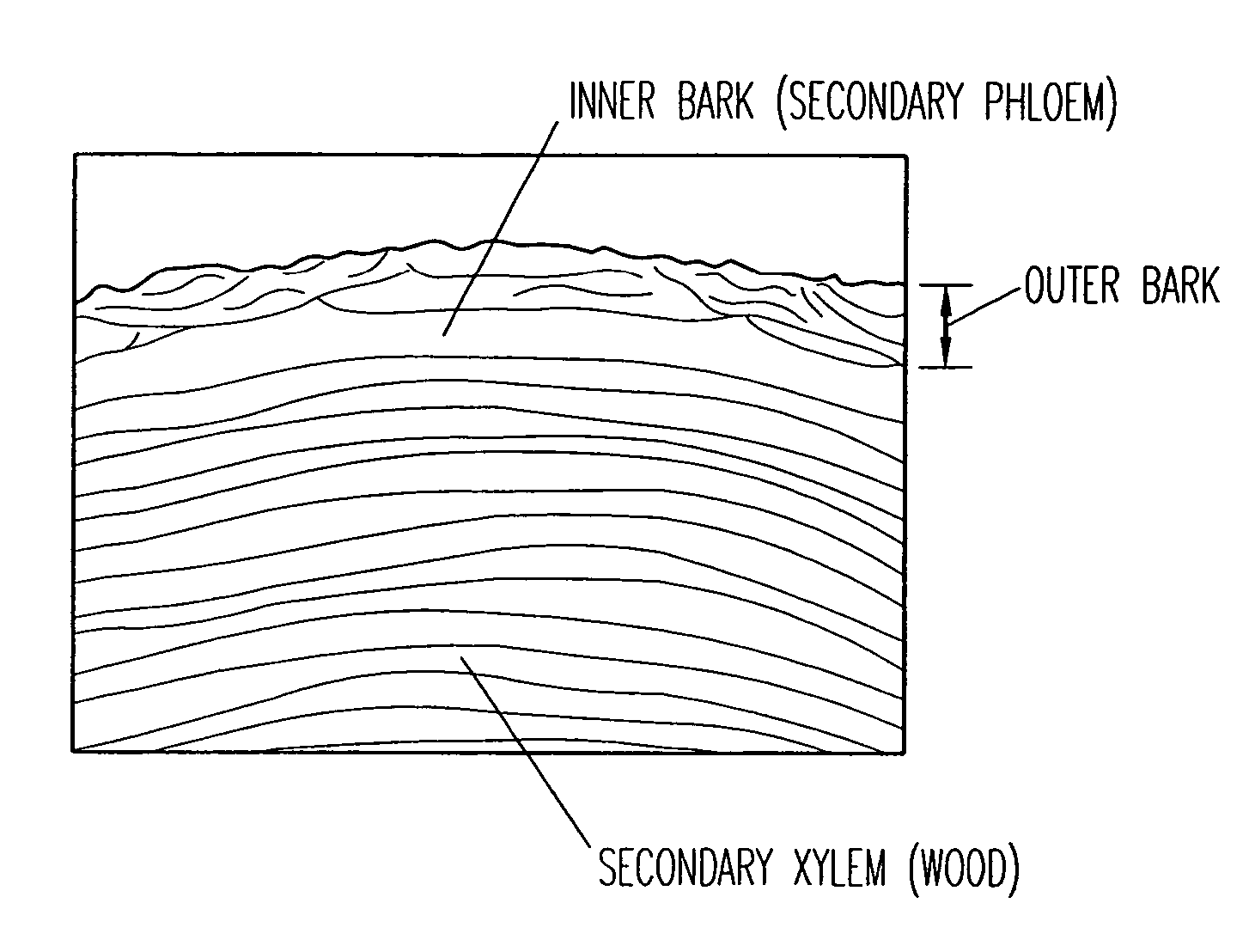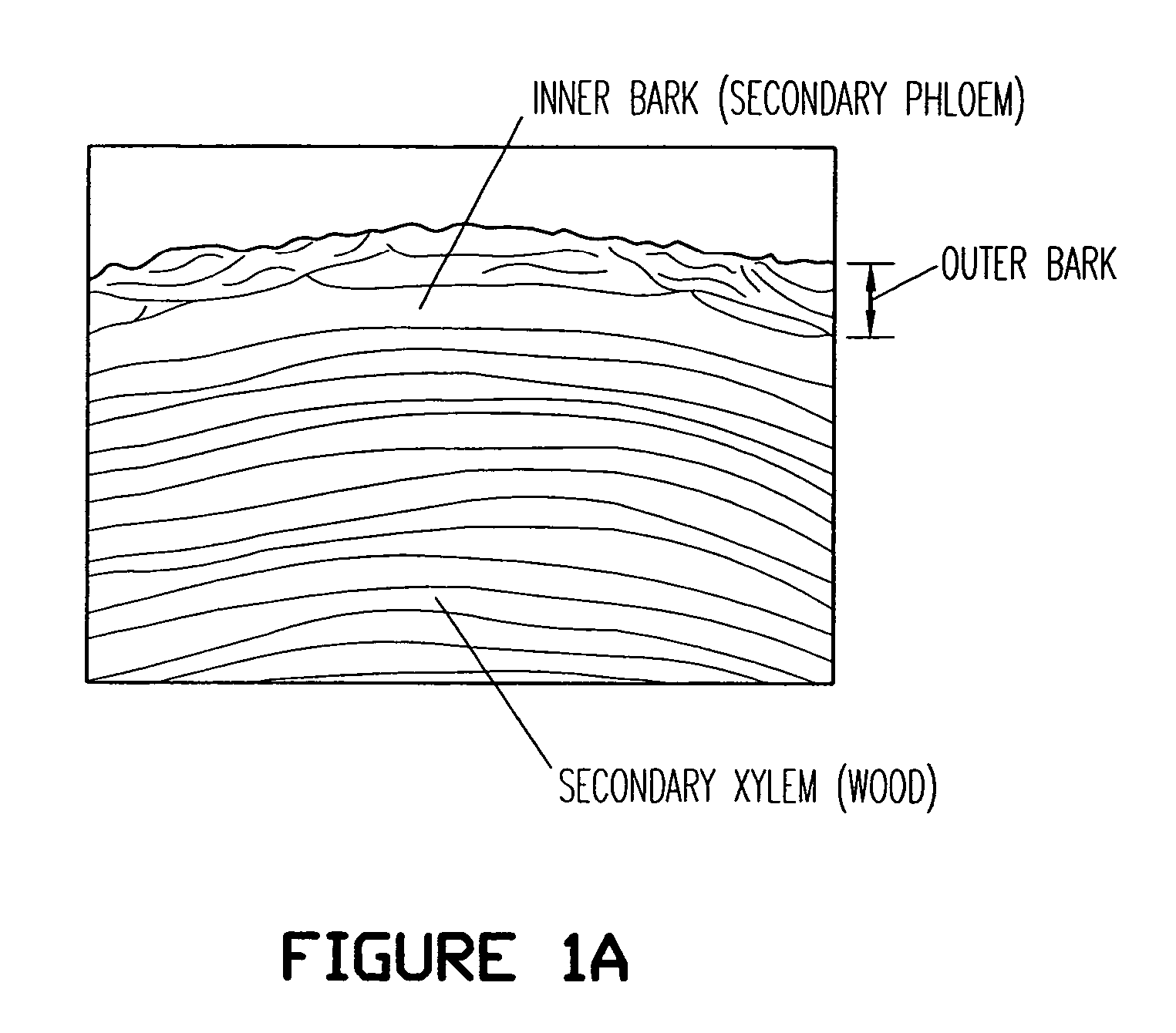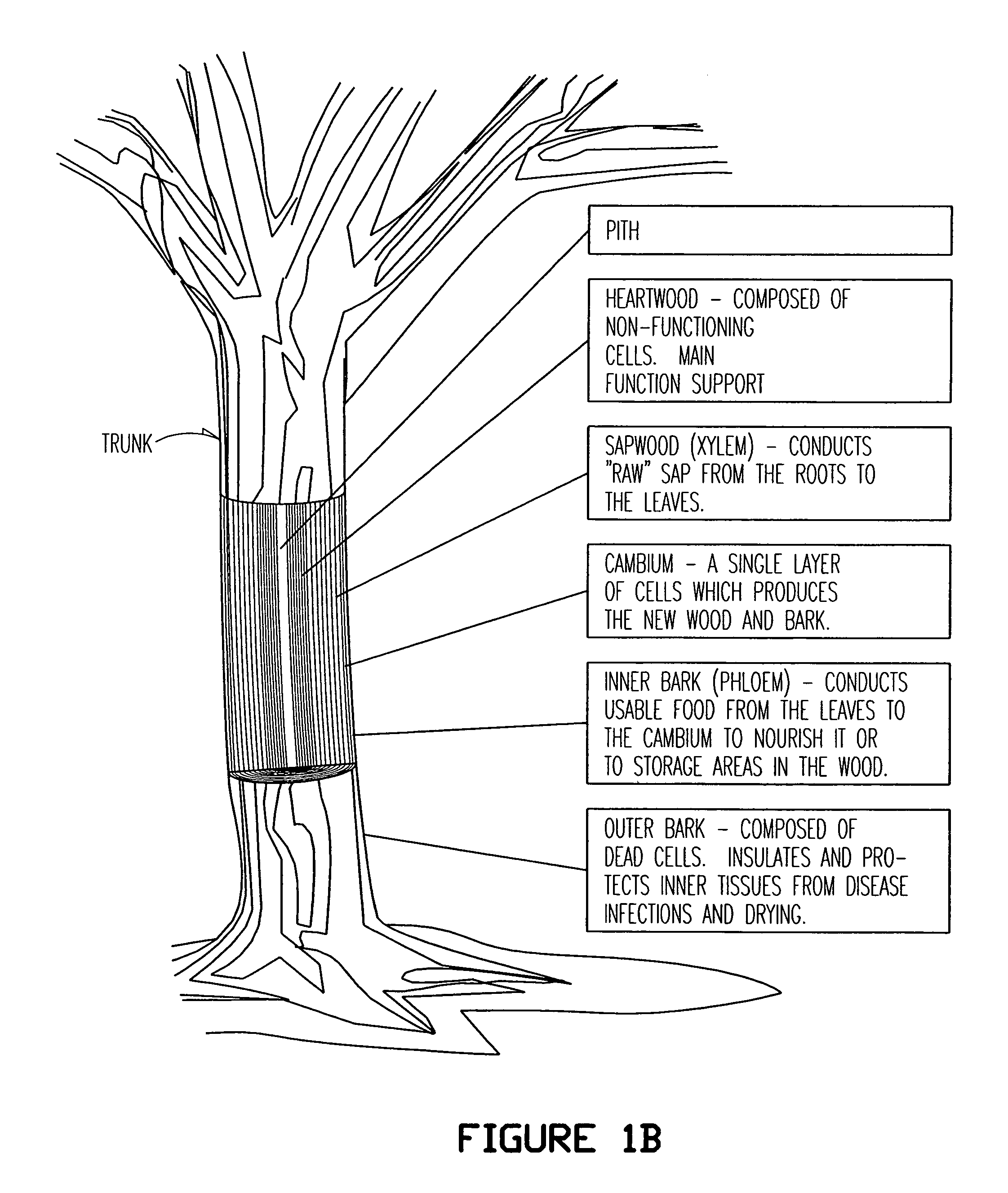Birch bark processing and the isolation of natural products from birch bark
a technology of natural products and birch bark, which is applied in the field of birch bark processing and the isolation of natural products from birch bark, can solve the problems of destroying other useful compounds present in the bark, deficient current methods for isolating the chemical constituents of birch bark, and several major drawbacks in the process, etc., to achieve convenient disposal, avoid costly, long or dangerous procedures, and easy to handle
- Summary
- Abstract
- Description
- Claims
- Application Information
AI Technical Summary
Benefits of technology
Problems solved by technology
Method used
Image
Examples
example 1
Dry Method of Outer Birch Bark Manufacturing.
[0146]Birch bark (20 kg) from a drum debarker was air dried (24 hours, room temperature) such that the water content was less than 10% and was subsequently fed into a YardMan Model 246-648D401 chipper / shredder with an 8 HP gas powered motor. The outer bark shreds and inner bark pieces (combined mass of 19.9 kg) were separated on a wire screen with openings of ¼-by-¼-inch. Outer bark shreds (approximately 5.0 to 6.9 kg) and inner bark chunks (approximately 13.0 to 14.9 kg) were recovered from the screening process.
[0147]Shredded outer bark (size up to 10 mm) was ground up to the size of particles 0.5-1 mm using 15 HP 3B Hammermill machine (Jay Bee Manufacturing Inc.).
[0148]Ground outer bark was sprayed with water (2-5% by weight to outer bark) through sprinkler in horizontal mixer. Pelletization was provided using a Laboratory Pellet Machine (California Pellet Mill, Co., CA) through the die with 2 mm holes. The average size of cylindrical ...
example 2
Alkali Hydrolysis of Birch Bark, Isolation of 22-hydroxydocosanoic Fraction and 9,10-epoxy-18-hydroxyoctadecanoic Acid Fraction.
[0160]Outer birch bark (790 g) obtained after supercritical fluid extraction was added to a solution of NaOH (176 g, 4.4 mol) in 95% isopropanol (8 liters) and the mixture was refluxed (1 hour). After hot filtration, isopropanol (3.8 liters) was added to the bark and the mixture was refluxed (20 minutes). The reaction mixture was filtered and the filtrate was evaporated in vacuo at 30° C. (GS / MC sample 1). H2O (5 liters) was added to the condensed residue and the mixture was stirred for 2 hours at room temperature. The insoluble material was separated by centrifugation and acidified with 6% HCl to pH=4.7 (GS / MC sample 2) to afford 22-hydroxydocosanoic (90 lg). The purity of the 22-hydroxydocasanoic by GC / MS analysis is greater than 50%. The water solution after centrifugation (i.e., supernatant) was acidified with 6% HCl to pH=5.5-6.5 and the 9,10-epoxy-18-...
example 3
Recrystallization of 9,10-epoxy-18-hydroxyoctadecanoic Acid.
[0161]9,10-Epoxy-18-hydroxyoctadecanoic acid (179 g) was added to isopropanol (1.7 liters) and the mixture was allowed to reflux until all of the acid was dissolved. The temperature of the solution was decreased to room temperature and precipitation occurred over a period of approximately 5 hours. After centrifuging, the solution was evaporated and the resulting solid was crystallized in isopropanol (1 liter). The combined solids were dried in vacuo and 9,10-epoxy-18-hydroxyoctadecanoic acid (81 g) was obtained. The purity is greater than 95% (GC / MS analysis).
PUM
 Login to View More
Login to View More Abstract
Description
Claims
Application Information
 Login to View More
Login to View More - R&D
- Intellectual Property
- Life Sciences
- Materials
- Tech Scout
- Unparalleled Data Quality
- Higher Quality Content
- 60% Fewer Hallucinations
Browse by: Latest US Patents, China's latest patents, Technical Efficacy Thesaurus, Application Domain, Technology Topic, Popular Technical Reports.
© 2025 PatSnap. All rights reserved.Legal|Privacy policy|Modern Slavery Act Transparency Statement|Sitemap|About US| Contact US: help@patsnap.com



